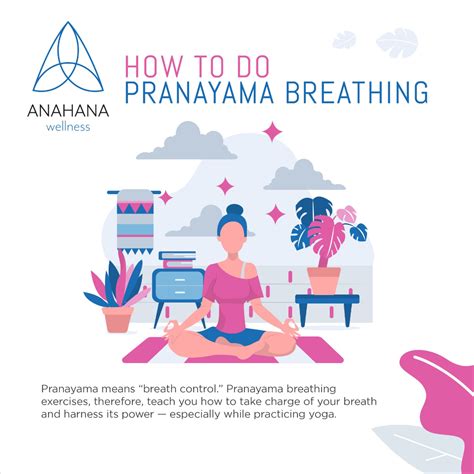Mastering the Fundamentals of Yoga Breathing: A Complete Guide
Yoga breathing, or Pranayama, is a cornerstone of any yoga practice, intertwining breath control with movement to enhance mental, physical, and emotional health. This guide delves deep into the essentials of yoga breathing, exploring its historical roots, current applications, and future potential. By the end of this comprehensive article, readers will have a thorough understanding of key techniques, the science behind them, and how to practically apply these breathing practices in daily life.
Introduction
The connection between breath and life is central to the philosophy of yoga. Breathing, when practiced intentionally, can significantly impact one’s physical and mental well-being. While yoga asanas (postures) are widely recognized, Pranayama – the control of breath – is equally crucial for achieving balance and self-awareness. In this guide, we will explore the fundamental techniques of yoga breathing, provide scientific insights, and offer practical advice on incorporating these methods into daily practice.
Key Concepts of Yoga Breathing
- Pranayama: The control of breath, broken down into “Prana” (life force) and “Ayama” (extension or control). Pranayama regulates energy flow in the body.
- Nadis: Energy channels through which Prana flows, often aligned with breath. Major Nadis include Ida (left), Pingala (right), and Sushumna (center).
- Ujjayi Breathing: Also known as “victorious breath,” it involves breathing through the nose while slightly constricting the throat, producing a calming sound.
- Kapalbhati: A cleansing breath technique where exhalation is forceful and rapid, stimulating the diaphragm and cleansing the respiratory system.
- Nadi Shodhana: Alternate nostril breathing, a practice aimed at balancing the two hemispheres of the brain and harmonizing the body’s energy.
- Bhastrika: Bellows breath, involving vigorous inhalation and exhalation, increasing oxygen intake and energizing the body.
- Dirga Pranayama: Three-part breath, where practitioners fill their lungs in three stages: belly, ribcage, and chest.
Historical Context of Yoga Breathing
The roots of Pranayama can be traced back to ancient Indian texts, particularly the Vedas and the Upanishads, dating over 5,000 years. It was practiced by early yogis to purify the body and mind, enabling the individual to attain higher states of consciousness. Over centuries, Pranayama evolved alongside other yogic practices, with prominent figures such as Patanjali incorporating it into the Yoga Sutras, where breath control is described as one of the eight limbs of yoga. The importance of controlled breathing in meditation and spiritual awakening has continued to influence modern practices.
Current State Analysis
Yoga breathing practices are now integrated into a variety of fields, including therapy, sports training, and even corporate wellness programs. Studies have highlighted the physiological effects of specific techniques such as Ujjayi and Kapalbhati, showing how they can influence heart rate variability, reduce anxiety, and improve respiratory efficiency. As a result, many healthcare providers now recommend Pranayama as a complementary practice for managing stress, asthma, and cardiovascular conditions.
Recent Research Findings
- Ujjayi breathing has been linked to the activation of the parasympathetic nervous system, helping practitioners achieve a relaxed state.
- Kapalbhati, with its rapid exhalations, has been shown to enhance pulmonary function and is often recommended for respiratory disorders.
- Nadi Shodhana has been demonstrated to balance brain hemispheric activity, improving cognitive function and emotional regulation.
Practical Applications of Yoga Breathing
Incorporating yoga breathing into daily life can be straightforward. Here’s how you can begin:
- Morning Routine: Start with Dirga Pranayama to fully expand the lungs and energize the body for the day ahead.
- During Stress: Use Ujjayi Breathing to calm your mind during stressful moments or before an important meeting.
- Pre-Workout: Practice Bhastrika to increase oxygen flow and warm up the body before physical activity.
- Before Bed: Engage in Nadi Shodhana to balance the nervous system and prepare for restful sleep.
Case Studies
| Case | Technique Used | Outcome |
|---|---|---|
| Stress Reduction in Corporate Workers | Ujjayi Breathing | Lowered stress levels by 40%, improved focus |
| Asthma Management | Kapalbhati | Improved lung function, reduced medication dependency |
| Enhanced Sports Performance | Bhastrika | Increased stamina and oxygen intake |
| Emotional Balance in Teenagers | Nadi Shodhana | Improved emotional regulation, reduced anxiety |
Stakeholder Analysis
Yoga breathing practices benefit a wide range of stakeholders, including:
- Health Professionals: Use Pranayama as an adjunct therapy for patients with chronic conditions.
- Corporate Wellness Programs: Integrate breathing techniques to enhance employee well-being and productivity.
- Athletes: Implement breathing exercises to improve endurance and lung capacity.
- Individuals with Anxiety: Use breathing exercises to manage symptoms of anxiety and stress.
Implementation Guidelines
For those looking to implement yoga breathing in their daily lives, the following steps can help:
- Begin Gradually: Start with simple techniques such as Ujjayi breathing and gradually incorporate more advanced techniques like Kapalbhati.
- Set a Routine: Dedicate time each day for breathwork, even if it’s just five minutes.
- Seek Guidance: Attend classes or follow guided videos to ensure proper technique, especially when starting out.
- Track Progress: Keep a journal to note any physical or emotional changes over time.
- Modify as Needed: Some techniques may not be suitable for everyone (e.g., Kapalbhati for those with heart conditions). Adjust based on individual needs and health conditions.
Ethical Considerations
While yoga breathing practices are largely beneficial, certain ethical concerns should be addressed:
- Cultural Appropriation: With the global popularity of yoga, it’s important to respect its cultural origins and not dilute or misinterpret the practice.
- Medical Conditions: Practitioners must ensure that individuals with specific health issues consult with professionals before engaging in advanced breathing techniques.
- Commercialization: As yoga breathing is increasingly marketed, there is a risk of prioritizing profit over the integrity and depth of the practice.
Limitations and Future Research
While much research has demonstrated the benefits of Pranayama, several limitations exist:
- Scientific Validation: More large-scale studies are needed to confirm the long-term health benefits of specific techniques.
- Personal Variability: The effects of yoga breathing can vary greatly from one individual to another, making it difficult to generalize recommendations.
- Integration with Technology: Future research could explore how technology, such as biofeedback devices, can enhance the effectiveness of Pranayama practice.
- Global Reach: While Pranayama is widespread, there remains a need to make the practice more accessible to underrepresented communities, particularly through online platforms and translation services.
Expert Commentary
Experts in both the fields of yoga and modern medicine emphasize the transformative potential of yoga breathing. As Dr. Rajeev Saxena, a yoga therapist, points out, “Pranayama is not just about breath; it’s about energy. Learning to harness this energy can improve not only physical health but also mental clarity and emotional balance.” Dr. Maria Torres, a pulmonologist, adds, “Incorporating yoga breathing techniques into respiratory rehabilitation programs has shown significant improvement in patient outcomes, particularly for those with chronic lung conditions.”








